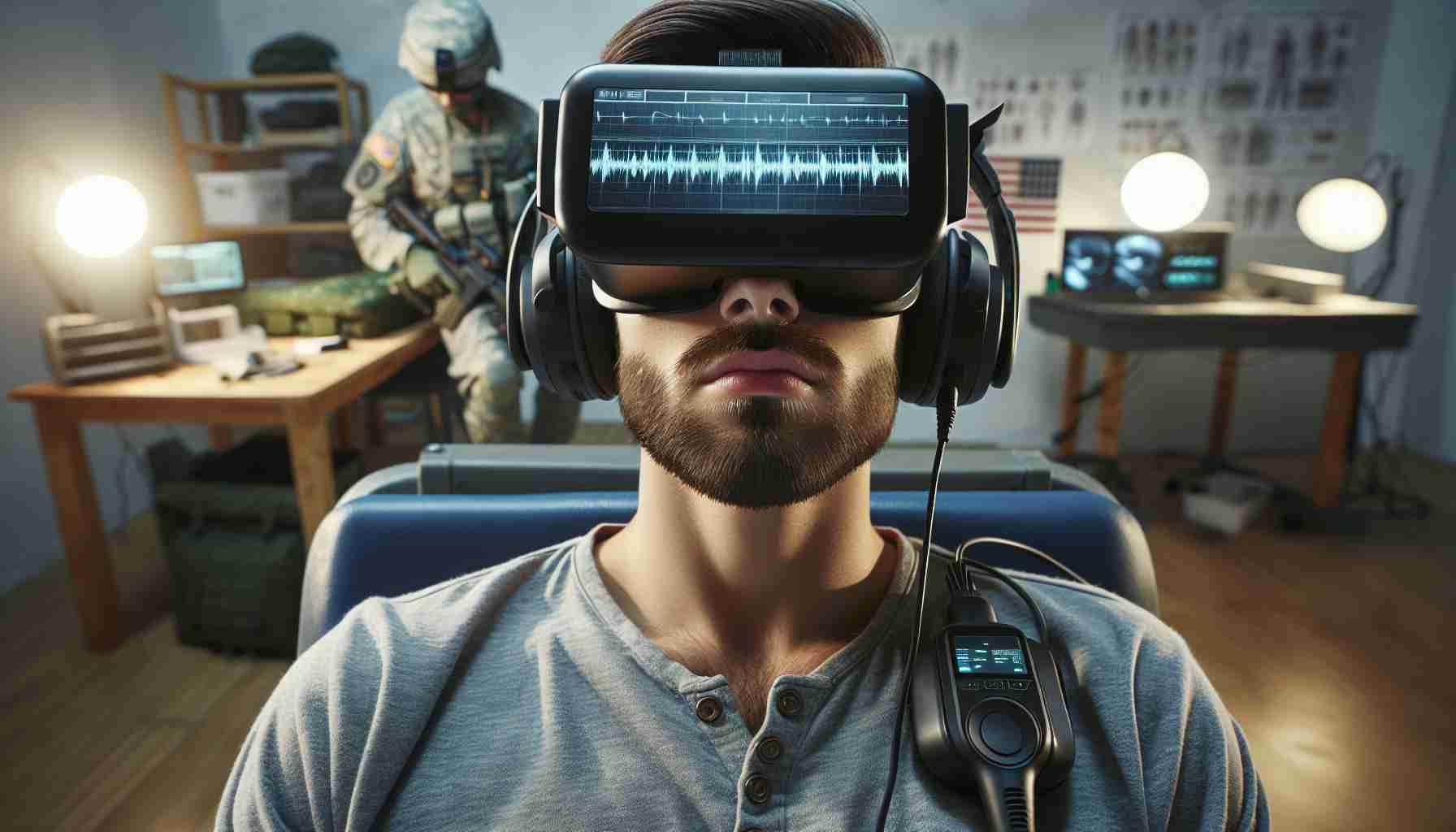Virtual reality (VR) technology has revolutionized the field of therapy, offering innovative solutions for the treatment of psychological disorders. One such breakthrough has been made by Sana Health, an American company that has developed a VR headset specifically designed to address post-traumatic stress disorder (PTSD). By leveraging audiovisual stimulation, this wearable VR mask aims to reduce the symptoms associated with PTSD, providing patients with a unique and immersive therapeutic experience.
The effectiveness of Sana Health’s VR device has been explored through a rigorous decentralized clinical trial conducted by Curavit Clinical Research, with support from the US Department of Defense. Over a period of 28 days, more than 45 patients participated in the study, which took place in a veterans’ hospital. With an impressive participant retention rate of 76%, the trial was remotely monitored through electronic patient assessments, ensuring accurate and reliable data collection.
PTSD is a psychological condition commonly observed among military personnel, occurring as a result of exposure to traumatic events during service. Recognized symptoms include distressing flashbacks, debilitating anxiety, and recurring nightmares, all of which significantly impact an individual’s daily life. Through the use of coordinated light impulses and sound at different frequencies, Sana Health’s VR device offers audiovisual stimulation that aims to alleviate these distressing symptoms and enhance the overall well-being of patients.
The application of VR technology in the treatment of psychological disorders is gaining popularity, particularly in exposure therapy. In fact, the global VR market is projected to reach an astonishing value of $51 billion by 2030, an annual growth rate of 27% from its $5 billion value in 2020, according to a report by GlobalData. This projection highlights the immense potential of VR in the therapeutic space, providing a cost-effective and time-efficient alternative to traditional pharmacological interventions.
Frequently Asked Questions:
1. What is the purpose of Sana Health’s VR device?
Sana Health’s VR device aims to reduce symptoms of post-traumatic stress disorder (PTSD) through audiovisual stimulation.
2. How does Sana Health’s VR device work?
The device delivers audiovisual stimulation through coordinated light impulses and sound at different frequencies.
3. What clinical trial was conducted for Sana Health’s VR device?
A decentralized clinical trial was conducted by Curavit Clinical Research, supported by the US Department of Defense. The study involved over 45 patients in a veterans’ hospital for 28 days, with a participant retention rate of 76%.
4. What are the symptoms of PTSD?
Symptoms of PTSD include distressing flashbacks, severe anxiety, and recurring nightmares, significantly impacting daily life.
5. What are the benefits of using VR in the treatment of psychological disorders?
VR offers a promising alternative to pharmacological interventions in the treatment of psychological disorders like PTSD. It provides lower costs and reduced time commitment for patients, caregivers, and healthcare professionals.
6. What is the potential of the VR market in the future?
According to GlobalData, the global VR market is projected to reach a value of $51 billion by 2030, growing at an annual rate of 27% from $5 billion in 2020.
7. What are similar applications of VR in therapy on the market?
Similar applications of VR in therapy include exposure therapy for the treatment of phobias, anxiety disorders, and various other psychological disorders.
8. What are the potential advantages of VR therapy compared to traditional treatment methods?
VR therapy offers lower costs and reduced time commitment for patients, caregivers, and healthcare professionals compared to traditional pharmacological interventions.
9. What are the potential risks associated with using VR in therapy?
Potential risks of using VR in therapy include the possibility of side effects such as nausea, dizziness, and spatial disorientation.
10. What are suggested further resources on this topic?
For more information on VR in therapy, visit VRFocus (www.vrfocus.com).
With ongoing advancements in VR technology, the future of therapy holds great promise. As more innovative solutions like Sana Health’s VR device continue to emerge, we can expect a transformation in the field of psychological treatment. VR therapy offers new avenues for healing, opening doors to greater accessibility, effectiveness, and patient satisfaction. Embracing this new frontier in therapy will undoubtedly revolutionize the way we address and overcome psychological disorders.
The source of the article is from the blog elperiodicodearanjuez.es








